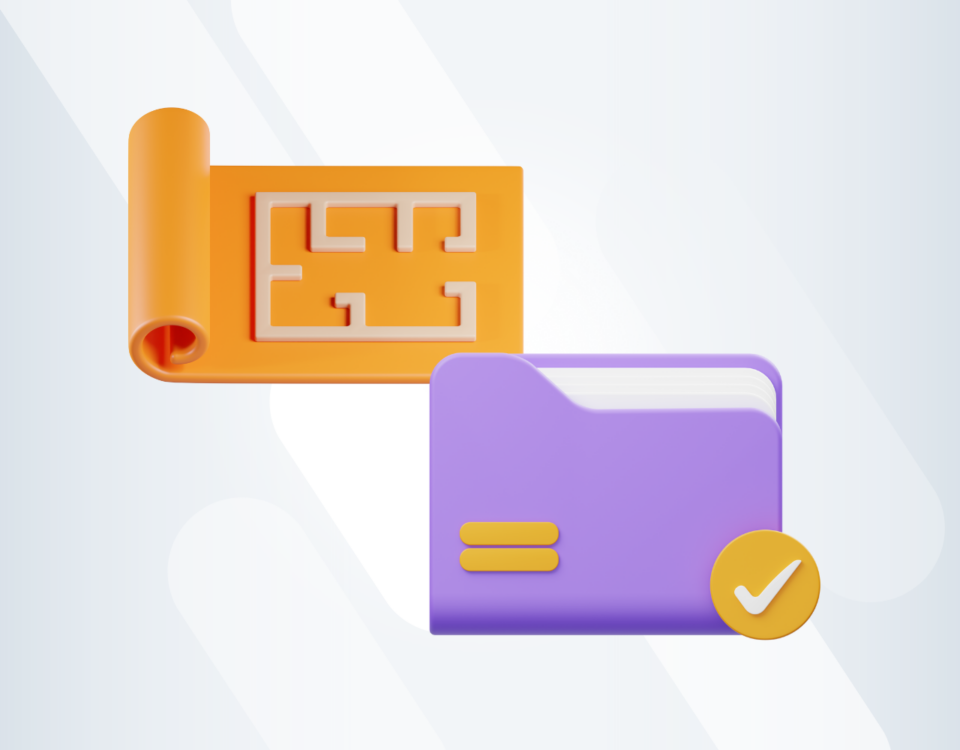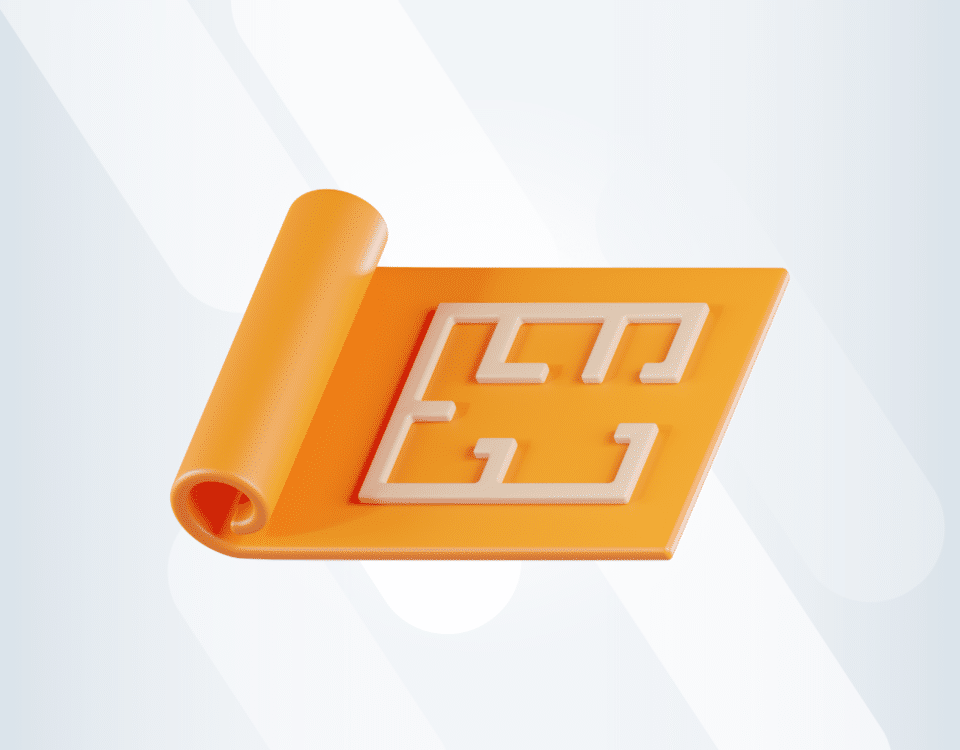Construction Tips, News & Best Practices
Technology and Software in Fire Prevention
Digitalization and new technologies bring room for improvement in many industries - and fire safety is no different. Since the invention of the first automated water sprinkler, technology has come a long way to make fire prevention more effective and reliable. See what the newest solutions are and learn how they work!
Fire Prevention Technology for Construction
Did you know that the first person to create a fire safety system was Leonardo Da Vinci? He installed a water sprinkler system of his own making in a wealthy customer's kitchen. Unfortunately for da Vinci, and the poor customer as well, the system turned out to work too well, and when a small fire broke out, it caused quite a big flood, destroying a part of the kitchen and a banquet that was going on.
Fire safety systems have come a long way since da Vinci's unfortunate attempt. We have had automatic water sprinklers for at least 150 years now; we have fire extinguishers in every building and in every car (or at least we should), we have procedures, and we build fire barriers inside buildings. But as fire safety is such a crucial matter, new technologies are being constantly developed to prevent the loss of life and health, property damage and disruption to activity.
Digitalisation and the adoption of new technologies in fire protection can ensure that our fire safety systems will be more effective, reliant and sustainable.
We can generally divide fire protection into two main groups: passive fire protection and active fire protection. Passive fire protection is the use of building components to control the spread of firewalls, floors and ceilings that can resist the passage of fire for some given time. They divide a building into compartments to reduce the size of a fire. In this article, however, we will be focusing on the active fire protection systems - the ones that use direct action to prevent the growth of fire and smoke and without alarming more people than necessary about an emergency. You're probably already familiar with fire sprinkler systems, smoke detectors and fire alarms. But what we will be talking about below are new and improved solutions you might not have heard of before!
- 01
Water Mist Suppression
You might be thinking now: "Wait, you told me that we were gonna talk about NEW solutions. Isn't this basically the same as water sprinklers?" You are mostly right – they are very similar, but there are some essential differences that we need to consider. Water sprinklers are a crucial fire protection asset for both residential and commercial buildings. However, they have some drawbacks – they use a lot of water, which does not make them a very sustainable solution. They can also be problematic in areas with fragile equipment or electronics.
Water mist systems create much smaller droplets, which reduces the amount of used water while simultaneously increasing the area water is dispensed to. They reduce the overall temperature faster because what they produce is essentially steam, which replaces oxygen– the primary thing fire feeds on. It also creates a water barrier on surfaces, which reduces the fire spread rate. - 02
Video Smoke Detection and Video Flame Detection
Smoke and flame detectors play a crucial role in emergencies by providing an early warning, which can trigger fire protection systems and give people time to evacuate safely.
In our domestic lives, we often use smoke detectors that "sense" the smoke molecules, and they are effective, though not always– we will get to that later. Video Smoke/Flame Detection technology does have higher efficiency and, for some areas, may prove to be essential.
Video Image Detection (VID) technologies rely on two components to detect fire: cameras and computer algorithms. Cameras scan the area and send the footage to a computer, which then runs an algorithm "trained" in identifying groups of pixels showing signature behaviours of smoke and/or fire. If detected, the computer sends a signal to the alarm control system.
VID systems can work on standard security cameras when connected to a computer with VID software– which is good news if you already have cameras at the facility and don't want to spend money on additional ones.
Right now, as the technology is not that widespread yet, it probably won't be the top choice for most homes and small businesses, where small ceiling-mounted detectors are enough. Installing a VID system is a good solution in cases of:Covering wide areas
If the space to cover is really big, has a high ceiling or is outdoors.The need for a rapid response because of explosive substances or high-value assets.

- 03
Air Sampling Smoke Detectors
These systems are constantly working to provide the earliest possible warning of a fire hazard. They detect a fire before it spreads and can still be suppressed at an early stage.
They actively draw in air through sampling ports in the form of piping or tubing. Then the detector analyses the air for smoke. These detectors can pull air in from multiple locations in a building and, with that, constantly look for fire so as to react as soon as it starts. - 04
Smoke Alarms
A working, properly installed smoke alarm can have an enormous impact on survival chances in case of emergency. The sooner people are warned, the sooner they can evacuate. However, we need to consider that some people might not be able to hear even the best working alarm.
For some time now, there have been special smoke alarms designed for the needs of hard-of-hearing people, and they are proven to be effective. They can incorporate strobe lights or bed shakers to wake up people who would not hear the alarm.
The other group to consider is children. A study published in 2006 has shown that "standard residential smoke alarms fail to wake up the majority of children during slow-wave sleep". It led to the development of smoke alarms that enable recording personalised vocal smoke alarms –the voice of a parent or caregiver can wake up the child (this was proven to be effective in waking up most children) and provide instructions on what a child should do.
Now, this is also a perfect moment to talk about voice evacuation systems. They use a recorded verbal message to inform people about the emergency and instruct them about what to do to remain safe. Moreover, with this solution, the facility's staff can provide tailored instructions for people in different parts of the building. It has been found to cause less panic than an alarm tone. From my personal experience, I can easily believe it because I always used to get stressed hearing the alarm tone even though I knew it was just an evacuation rehearsal. - 05
The Internet of Things (IoT)
IoT is all around us– it's a technology that uses the internet and the flow of information between different devices to expand those devices' abilities. IoT is used in smart TVs, smart lighting in houses, smart fridges or smart cars. But IoT can also revolutionise and modernise fire safety systems. How?
A system that is centrally managed by IoT has a significant advantage– the entire fire safety system is operated automatically by one computer and one software program. Many conventional fire protection systems are based on interconnected alarm systems, but they might often be installed by different manufacturers, each having different requirements for monitoring and maintenance.
IoT establishes a faster and more secure data connection between fire detection and life procedures. During an emergency, it is crucial that facility management can access the whole fire safety system from one room, on one device or even through their smartphones.
Also, there is an increase in "smart buildings" with many using cutting-edge fire-detection systems. They use sensors to read the building's temperature with such precision that they can detect the fire before traditional smoke alarms and instantly start a cascade of procedures to ensure safety and damage control. - 06
The BIM
BIM (Building Information Modelling) is a tool used by architects, engineers, and operators, which provides a multidimensional model that includes all relevant data about the building. This includes the most important data about fire protection– a fire detector system or the required fire resistance of any given door or wall, etc. Learn more about BIM!
BIM provides all of the specialists working on the project access to the same data ensuring effective cooperation. For example, if a fire protection planner wants to change fire compartments, he has all the relevant information in one place. Subsequently, all other specialists working on the building will immediately see information about the changes– which locations need additional partitions for that matter. In short, BIM ensures that everything will be done correctly so that a building is best prepared for a fire emergency and there are no inconsistencies in the project.
All the stored data of installed components can also later be used by the building management. It provides an overview of maintenance intervals for fire protection doors, smoke detectors, alarms and extinguishing systems. - 07
Big Data and Predictive Analysis
Evaluating large volumes of data gives us room for improvement in risk analyses. It is currently being investigated if Big Data analyses could deliver precise predictions about future events. If so, such calculations could be used to optimise site planning, with the aim of shortening the time needed to provide emergency assistance and therefore reduce the number of victims of a fire. Learn more about AI and Big Data usage in construction!
Predictions for preventive fire protection would use data sources such as fire statistics, building data, geographical information systems, sensors in the building, weather, fire service deployment statistics, location analyses and population statistics.
When a fire breaks out, every second is crucial for minimising harm for people in the area, potential damage, and facility functioning disruption. The technologies listed above create the chance to deal with fire faster and more effectively than it was ever possible before. The development of artificial intelligence, big data and IoT will most likely bring further improvements in the field, so it is definitely something to look out for. As shown by this article, digitalisation can not only make our life easier and our work more effective but also support us in saving lives and navigating hazardous situations.
1 Comment
You might also like
February 29, 2024 • 7 min read
Utilizing the human-first approach to construction projects to drive higher results.
July 3, 2023 • 6 min read
8 Best Construction Drawing Management Software (2023): A Comprehensive Guide
Find all the information you need about the construction drawing management software tools available on ...June 14, 2023 • 6 min read
The 11 Best PlanGrid Alternatives (2023)
Looking for a great alternative to PlanGrid software? Check out the 11 best construction software tools ...June 14, 2023 • 4 min read
How to win at CIS 340 and make taxes a breeze
CIS 340 is a legal obligation for contractors. But getting it right isn’t straightforward. Want ...







According to Value Market Research, the latest technology trends and global market opportunity analysis in the Fire Protection Systems Market industry growing with a high CAGR in the upcoming year. Our report has categorized the market based on technology, service, development, vertical and region. https://www.valuemarketresearch.com/report/fire-protection-systems-market